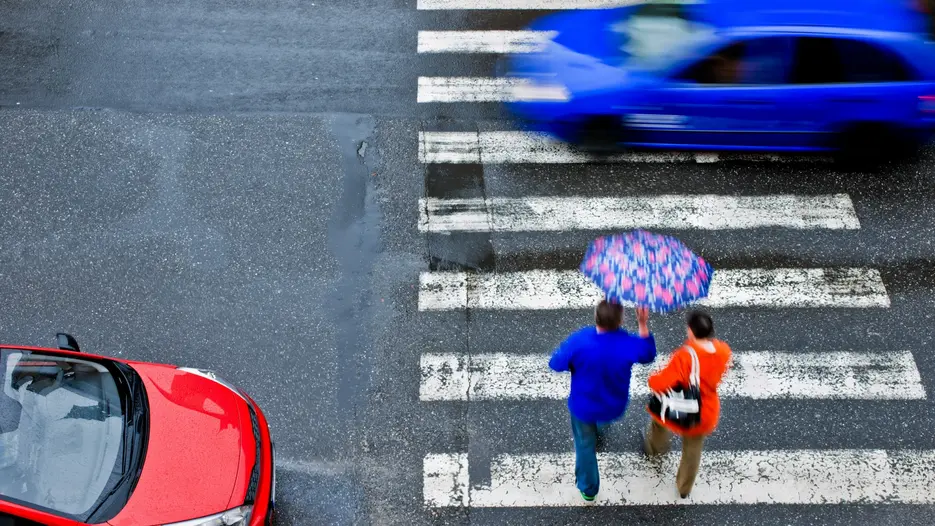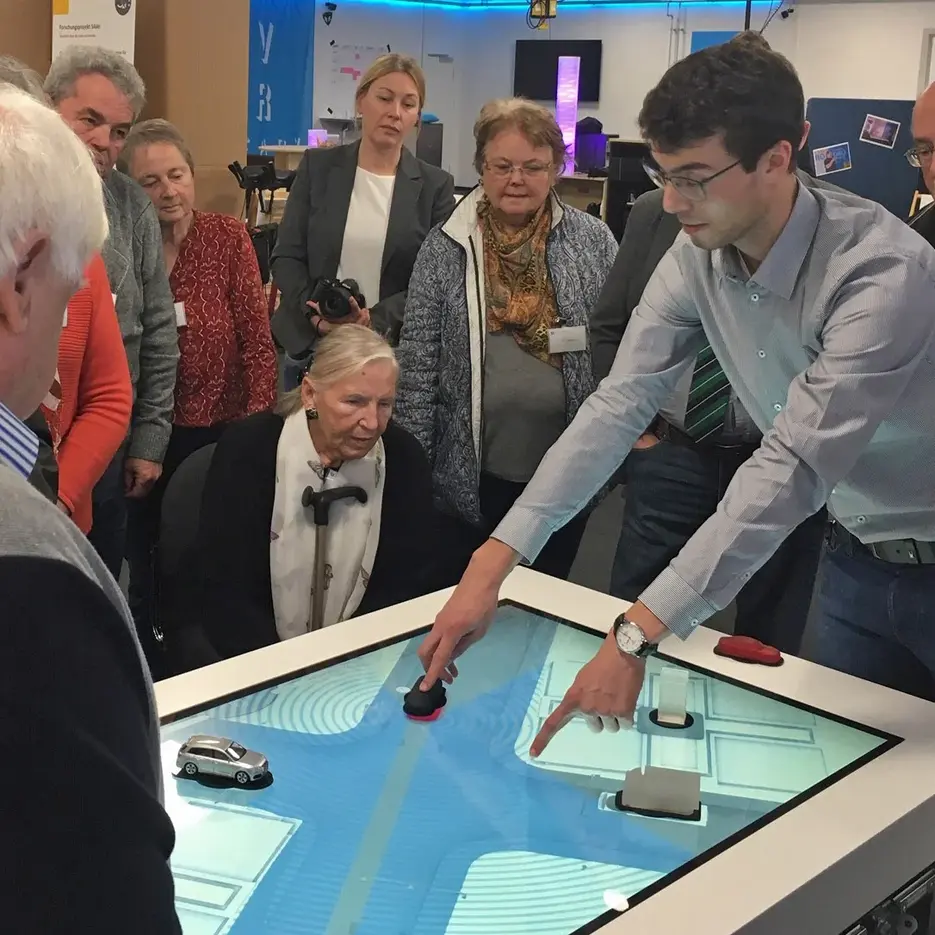By taking digitalized road sections from the Ingolstadt city area as a reference, technical SAVe project participants want to map the diverse urban infrastructure in order to then be able to test and enhance automated driving functions in a virtual model. In this project phase, researchers will also take into account requirements of potential users and perspectives of other road users, e.g. pedestrians who will be confronted with automated vehicles in future road traffic situations: “Due to the lack of visual contact with a driver, for example, we need to develop new concepts for communication between different road users and ensure that a road is safe to cross without anyone taking damage”, explains Marco Steinhauser, professor of psychology. During the course of the project, citizens will be given the opportunity to experience virtual road traffic in Ingolstadt from the perspective of a pedestrian with the help of virtual reality applications.
In addition, KU project team members also want to investigate the acceptance among users of automated vehicles in a simulator. This simulation will enable participants to experience what it feels like when a car breaks and accelerates autonomously or changes lanes and navigates to its destination in dense urban traffic independently. “The aim is to provide users with sufficient knowledge on these new systems so that they can understand the behavior of the systems and learn to trust them. This is a necessary basis for general acceptance of autonomous driving”, adds Prof. Dr. Steinhauser. This process was not only about the individual sense of comfort but also addressed the question to what extent passengers would be able to carry out other actions while driving and how to minimize or eliminate motion sickness arising in such situations.
Simulations will also take into account findings gathered in interviews and moderated group discussions focusing on analyzing mobility requirements and citizens’ general attitude: “Autonomous driving is not intended as an end in itself but shall also offer an additional benefit for the people. This is why it is especially important to incorporate the civil society in the decision-making processes when developing innovative mobility services”, emphasizes Prof. Dr. Jens Hogreve. Employees at the Chair of Service Management have already hosted first discussion rounds in November in collaboration with the Bürgerhaus Ingolstadt: Together with senior citizens, they wanted to find out in what ways autonomous driving could be beneficial for everyday life. Participants also discussed people’s concerns in view of the topic. One of the major benefits named was that autonomous vehicles could in particular help the elderly to maintain their mobility for a longer period of time. However, there were deviating opinions as far as people’s trust in the new technology was concerned: While some were prepared to trust an autonomous vehicle implicitly, others would wish to retain the possibility to intervene at any time or would still like to be able to drive themselves, despite fully automated driving functionality. On the occasion of these meetings, participants were also able to experience automated driving functions in the simulator. The feedback on the two events was consistently positive – some participants even put their names down for the following study.
For further information on the project, please visit www.save-in.de

